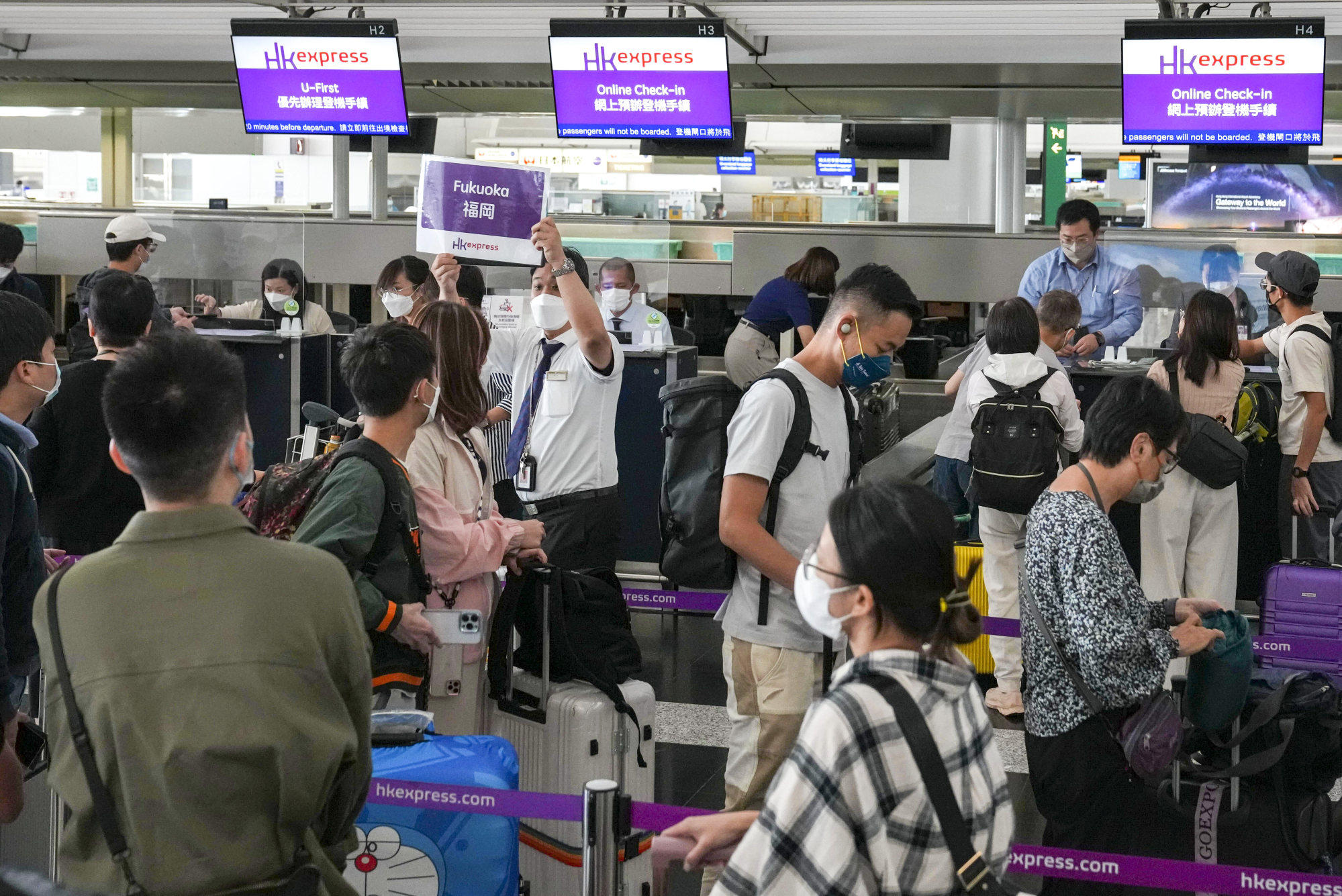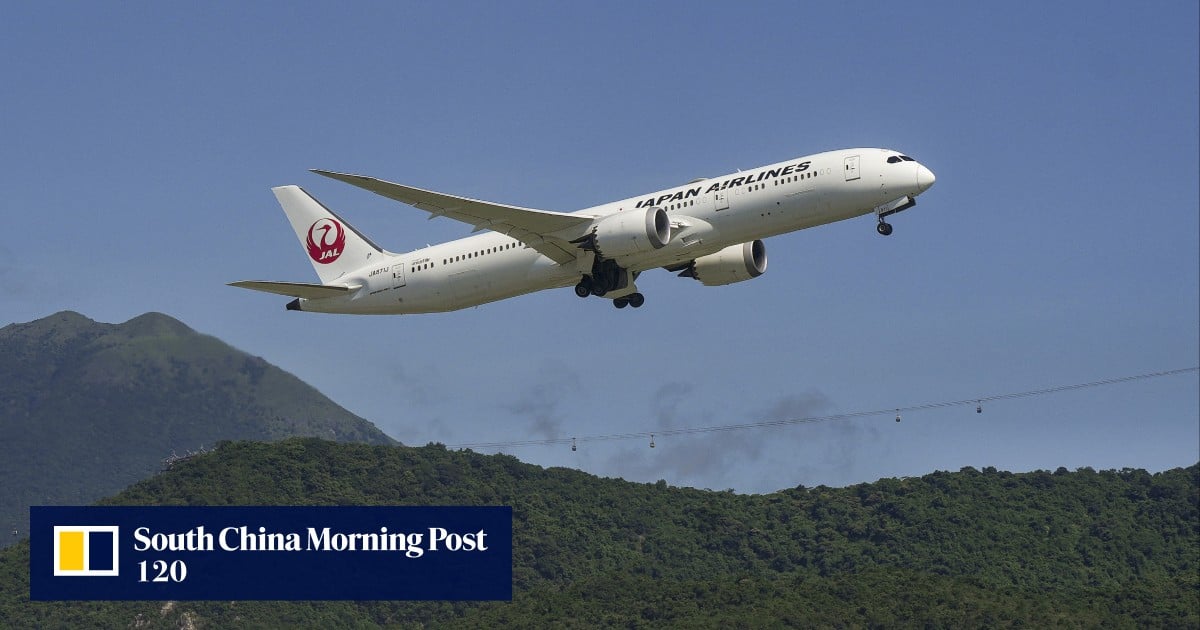As a result, the carrier is redeploying aircraft to routes where demand is higher, including Hong Kong. Starting from January 9, the company will increase the number of flights to the city from Tokyo Narita from five a week to one a day, in addition to a daily flight using Tokyo’s Haneda Airport.
Thailand’s flag carrier was also looking to redeploy capacity to other destinations, such as in Australia and Europe, where Eamsiri said he saw greater demand compared with the mainland.
The carrier operates three daily flights to Hong Kong, which will be raised to four starting in February next year. It flies 25 flights to Beijing, Shanghai, Guangzhou, Chengdu and Kunming every week, with plans to increase the number to 30 from December.
Japan Airlines flies to Beijing, Shanghai, Guangzhou, Dalian and Tianjin.
Hong Kong’s Cathay chief hears supply chain problems hitting airlines’ recovery
Hong Kong’s Cathay chief hears supply chain problems hitting airlines’ recovery
The mainland was the largest air travel market before the pandemic and accounted for 20 per cent of Asia-Pacific’s international traffic, but the figure now stands at only 10 per cent.
Mainland travellers spent US$255 billion in 2019, accounting for almost 20 per cent of all international tourism spending, according to data from the United Nations’ World Tourism Organization.
The mainland opened its borders earlier this year after ending strict travel rules aimed at keeping Covid-19 out. Since then, international flights to and from the mainland have been slow to resume.
In August, the mainland lifted a ban on group travel from more than 70 countries, including Japan, South Korea and the United States. Many countries in the region had been banking on the return of mainland travellers to boost their economies.
But visa issues, a strong desire among mainland holidaymakers to travel domestically and weaker economic growth has slowed the return of international travel demand to pre-pandemic levels.
China demand crucial to restoring Singapore Airlines’ flight capacity, CEO says
China demand crucial to restoring Singapore Airlines’ flight capacity, CEO says
Ahead of the annual gathering that ended on Friday, Singapore Airlines’ CEO Goh Choon Phong said demand among mainland travellers was crucial in helping the airline restore its passenger capacity to pre-pandemic levels, but he acknowledged this could take a while.
Chinese visitor arrivals at Singapore Changi Airport recovered to 69 per cent of pre-pandemic levels in September.
Conrad Clifford, deputy director of the International Air Transport Association told the Post that he expected mainland international traffic to return to pre-pandemic levels by the middle of next year, in line with the organisation’s estimate.
“It’s not coming back as fast as everybody hoped for, but it’s definitely coming back,” he said.
In the meantime, airlines are looking elsewhere for customers. In January, the Thai government predicted as many as 5 million Chinese tourists would visit the country by year’s end, less than half of 2019’s figure. But only 2.49 million arrived in the first nine months.
Hong Kong’s Cathay tackles staff shortages, poor morale as it chases rivals
Hong Kong’s Cathay tackles staff shortages, poor morale as it chases rivals
Thai Airways’ Eamsiri said he had not seen a significant rise in mainland travellers since Thailand announced a five-month visa waiver for them to boost flagging numbers.
The carrier’s passenger load factor, a measure of how many seats are filled on planes, was still at half levels in both directions from the mainland.
“We have to find other destinations,” Eamsiri said. “We have a long list already for example, Milan, Sydney and Perth. We have opportunities to grow there”.
The carrier had to wait until the arrival of new aircraft before flying those routes, he added.
Thai Airways and its subsidiaries have 68 aircraft in operation and is seeking to expand its fleet. It reported a group net profit of 1.54 billion baht (US$42.4 million) for the July-September quarter, rebounding from a loss of 4.79 billion baht during the same period last year.
It filed for bankruptcy protection in 2020 and initially aimed to complete its restructuring in 2025, but was now on track to do so in late 2024.
Japan Airlines’ Shimizu said there was a keen appetite for travel to Japan this year, especially in North America and elsewhere in Asia other than the mainland.
“We are waiting, but it’s still very slow,” he said, referring to demand among mainland travellers.
The airline’s traffic from the mainland has dropped to about two-fifths of 2019 levels, while from Hong Kong, it remains at around four-fifths.

Japanese business travellers were still put off by the mainland’s complex visa process, according to Ross Leggett, the airline’s senior vice-president for route marketing.
While the cheaper yen had made Japan an attractive destination for Hongkongers, the currency depreciation and cost of living concerns were keeping Japanese travellers at home, according to Shimizu.
Japan Airlines said the number of passengers leaving from Japan was about half of 2019 levels.
Shimizu said inflation was weighing on demand to Hong Kong, Singapore and Hawaii, which used to be popular destinations among Japanese travellers.
“More affordable destinations such as Thailand and Indonesia have come back faster,” he said.

